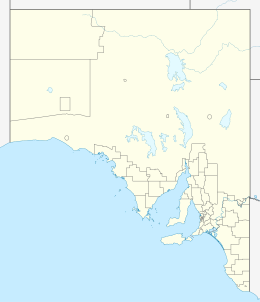Topgallant Islands
| Geography | |
|---|---|
| Location | Great Australian Bight |
| Coordinates | 33°42′55″S 134°36′54″E / 33.71536°S 134.61487°ECoordinates: 33°42′55″S 134°36′54″E / 33.71536°S 134.61487°E |
| Administration | |
|
Australia
|
|
| Demographics | |
| Population | 0 |
Topgallant Islands is an island group in the Australian state of South Australia located in the Investigator Group about 22 kilometres (14 mi) south west of Cape Finniss on the west coast of Eyre Peninsula. The group was discovered and named by Matthew Flinders on 13 February 1802. The island group has enjoyed protected area status since the 1960s and since 2011, it has been part of the Investigator Group Wilderness Protection Area.
Topgallant Islands is an island group located about 22 metres (72 ft) south west of Cape Finniss on the west coast of Eyre Peninsula in South Australia, about 27 kilometres (17 mi) west by south of the town of Elliston and about 6.5 kilometres (3.5 nmi) east of Flinders Island.
The group consists of an islet and a number of bare rocks which are numbered at seven in one source and which extend from the islet in a line for a distance of about 1.9 kilometres (1 nmi) to the south east. The islet which has an area of about 20 hectares (49 acres), is encircled by 75 metres (246 ft) high cliffs and has a rounded top whose summit is at 101 metres (331 ft) above sea level. The southernmost rock is reported as being a ‘sharp pyramid’ of 55 metres (180 ft) height.
The name used for the island group varies from the name given by Flinders (i.e. Topgallant Isles) as follows: Topgallant Islands, Top-gallant Islands, Top-Gallant Isles and Top Gallant Isles.
Access to Topgallant Island by boat is reported as not being possible due to a ‘combination of deep water swells, steep shores and sheer walls of rotten stone’. A survey carried in 1980 used a helicopter to land personnel on the islet.
The Topgallant Islands were formed about 8750 years ago following the rise of sea levels at the start of the Holocene.
Geologically, the constituent parts of the Topgallant Islands are the remnants of a stack of calcarenite strata sitting on a now-submerged ridge of granite which is now submerged and which has been extensively eroded by wave action since the commencement of sea level rise.
...
Wikipedia

